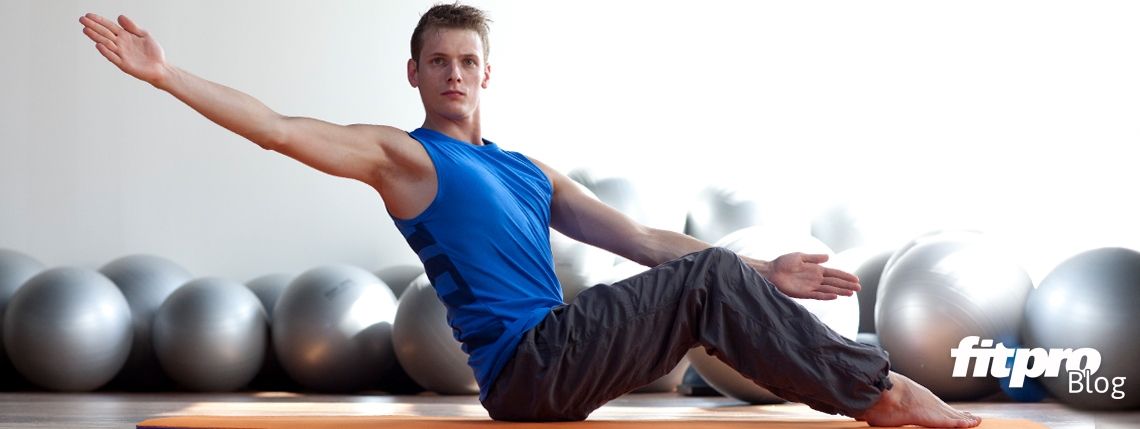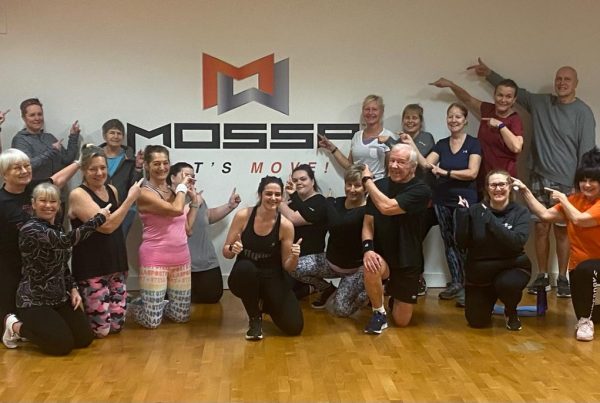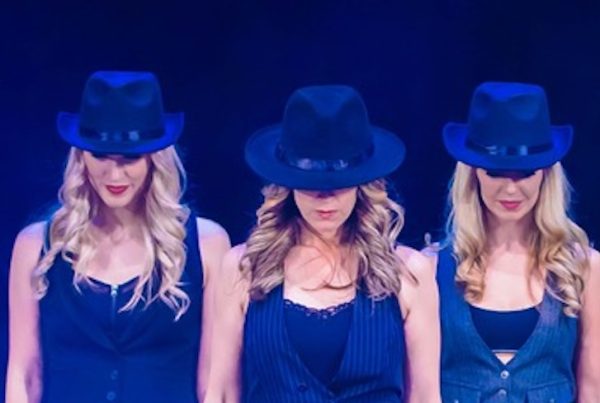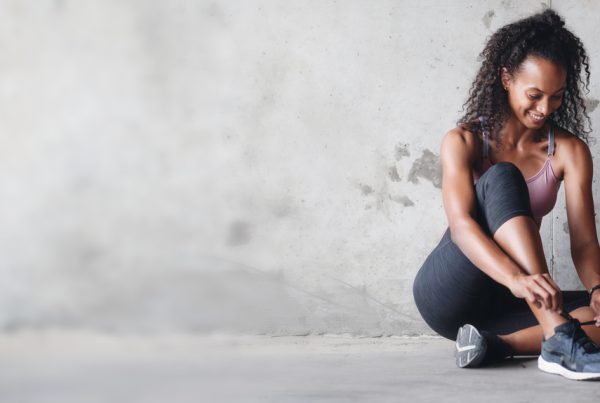Listen up runners! Are you abandoning your cool-down stretch? Ryanne Cunningham shares 10 yoga poses for you to include in your training.
Runners often think that, to be top performers, they need to focus only on their legs. However, runners also need to increase shoulder mobility, core strength, and flexibility in the spine, hips and related connective tissues. The arms provide momentum as they swing forwards and back. This repetitive motion can create tightness in the shoulders. The hamstrings and quadriceps are a runner’s constant power force in short and long runs. The repetitive motion and forward-leaning posture in running make it a physically demanding sport, so runners must take good care of their bodies. To prevent injury from tight muscles, runners need a stretching routine. The poses in this article address all the needs of runners. They also decrease muscle recovery time, allowing runners to continue their training more easily. During each stretch, try to hold each pose for five to 10 breaths and switch sides.
Plank pose with IT band stretch
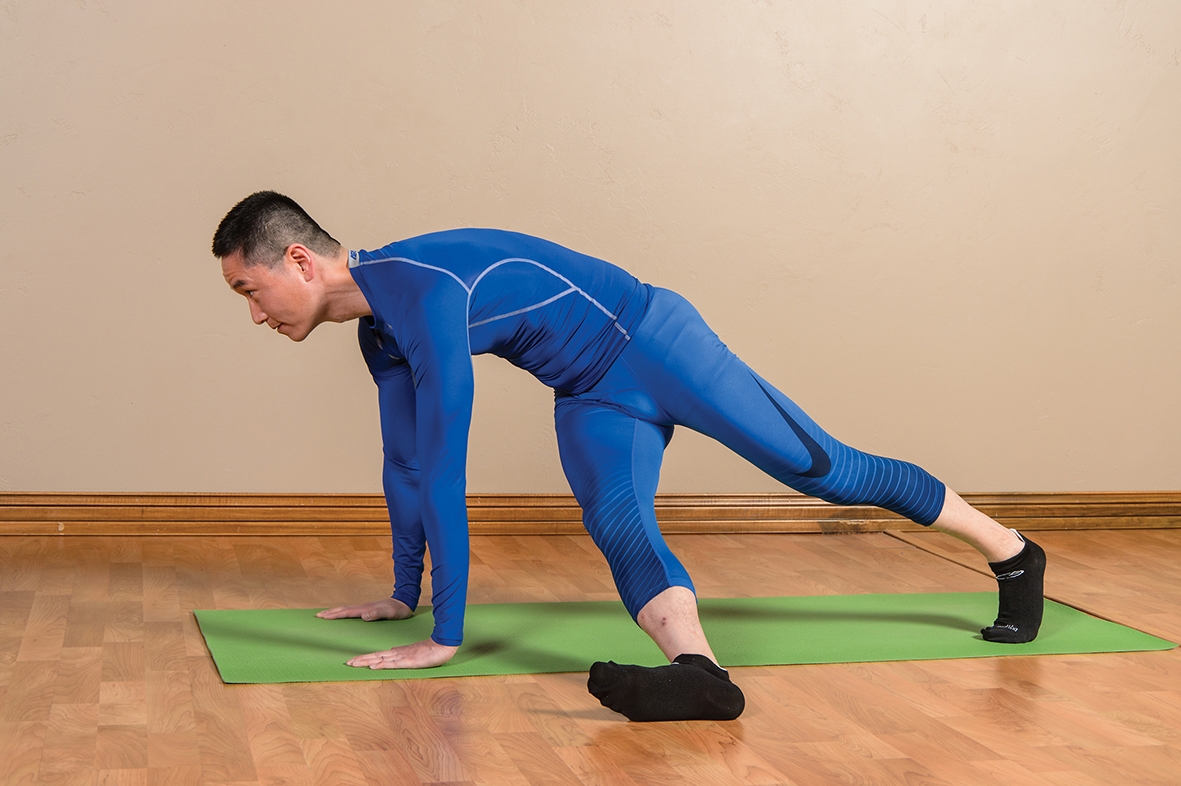
One of the most common sites of tightness or injury from the constant pounding on cement is the IT band. A simple stretch such as plank pose with IT band stretch will decrease that irritating achiness in the IT band and keep you away from IT band injury. From plank pose, bend your right knee to your chest. Flexing your right foot, straighten your right leg to the left, lowering your foot to the floor. Eventually work towards getting your toes to line up with your fingers. Hook your right hip under as you lengthen forward through your collarbones.
Seated forward fold

Runners’ hamstrings are quick to tighten up, and tight hamstrings can lead to low-back pain. Seated forward fold will keep your hamstrings loose and flexible. Sit on your mat, and straighten both legs out in front of you. Bring them together, keeping your feet flexed. Walk your hands down your legs, reaching for your feet, and wrap your hands around your feet. Bend your elbows out to the sides to lengthen your spine forward. Use a yoga strap around your feet and bend at your knees slightly for a hamstring stretch if you cannot touch your feet.
Low lunge pose
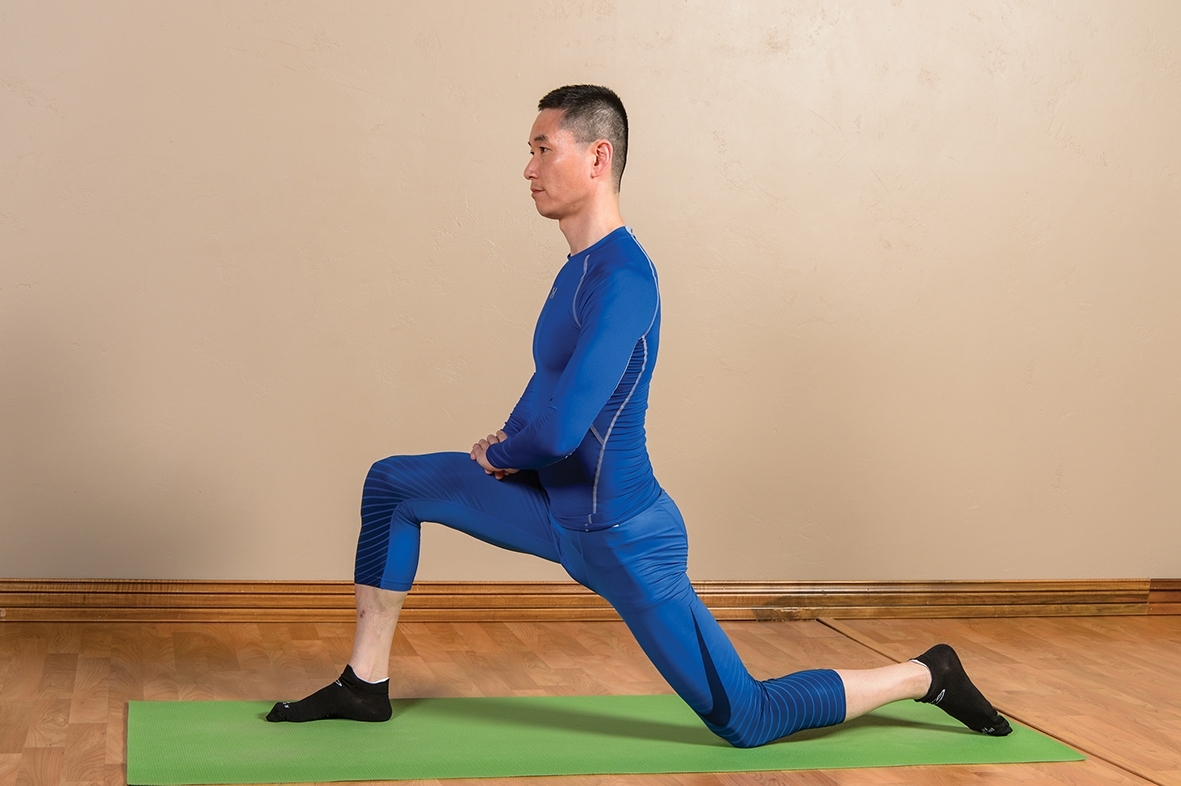
Staying balanced is key for runners to keep an even pace when training. The quadriceps is an important muscle group needed for running, and low lunge quadriceps variation will stretch the quadriceps to keep the legs balanced. Start in downward-facing dog pose. Step your right foot forward between your hands and lower your left knee to the mat. Place both hands on your right thigh to lift your torso as you lunge forward. Next, shift your hips back slightly as you bend your left knee. Lunge forward again. Switch legs.
Boat pose to half boat pose
Figure a
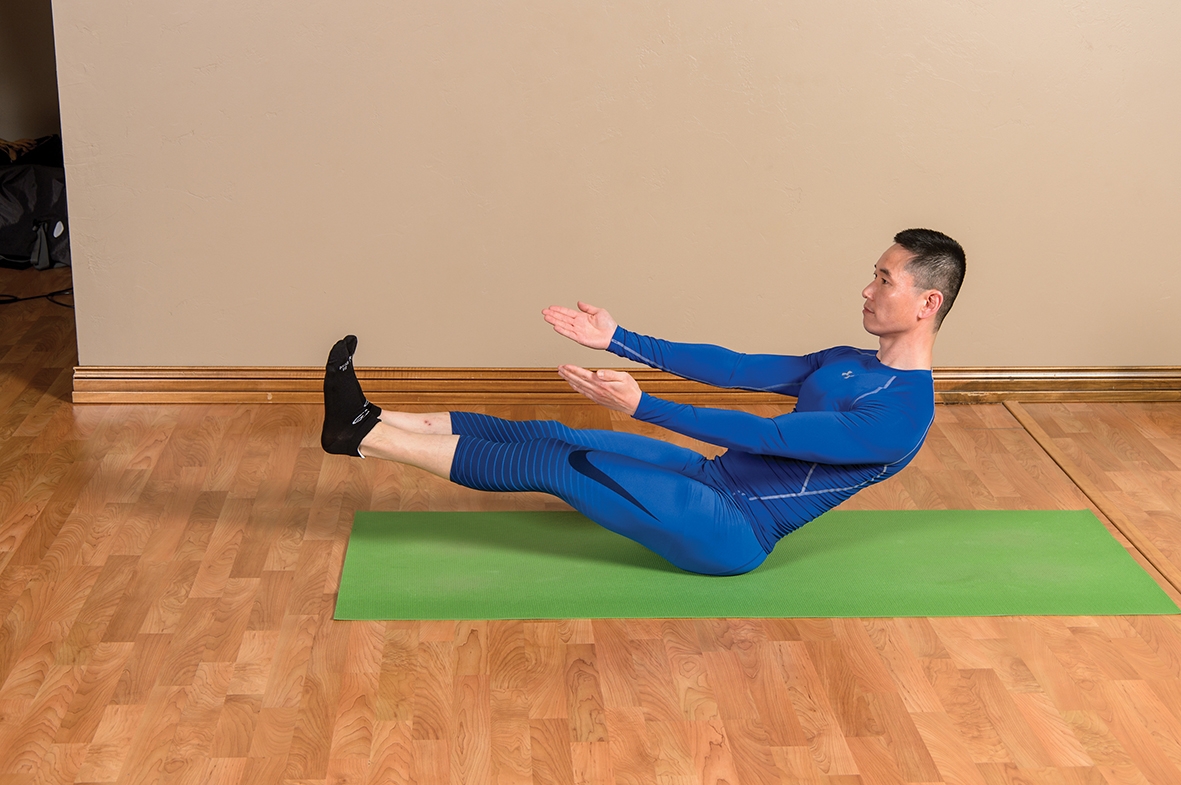
A strong core not only protects the back but also helps with posture, which then gives a runner a better pace and time. Sit on your mat with both knees bent and feet planted on the mat, parallel to each other. Wrap your hands around your hamstrings, and sit tall. Lean your torso back and lift your feet off the mat, balancing on your sitting bones. Release your hands, turning your palms face up. Straighten your legs so that you are in a V-shaped position; this is boat pose. Slowly lower your torso and legs to hover above the ground in half boat pose on your exhale (figure b), and lift back up to boat pose as you inhale. Perform five to 10 repetitions for two sets.
Figure b
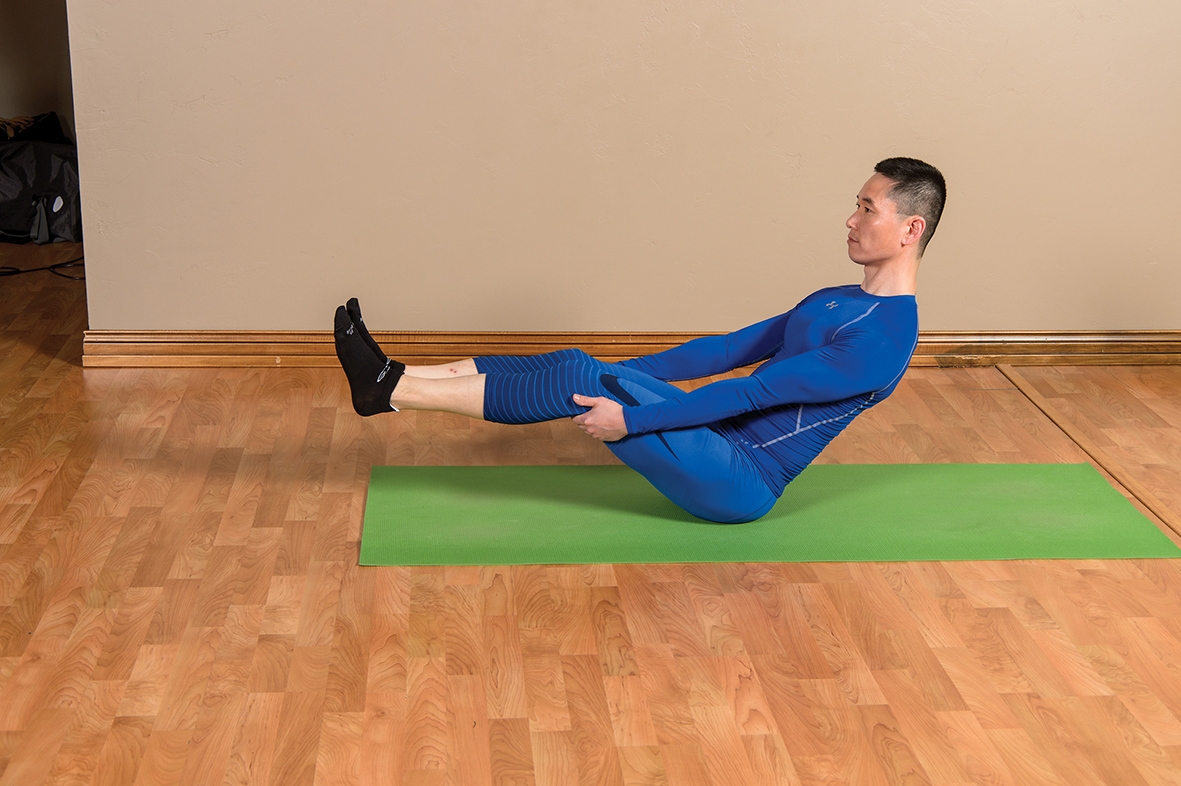
Seated spinal twist
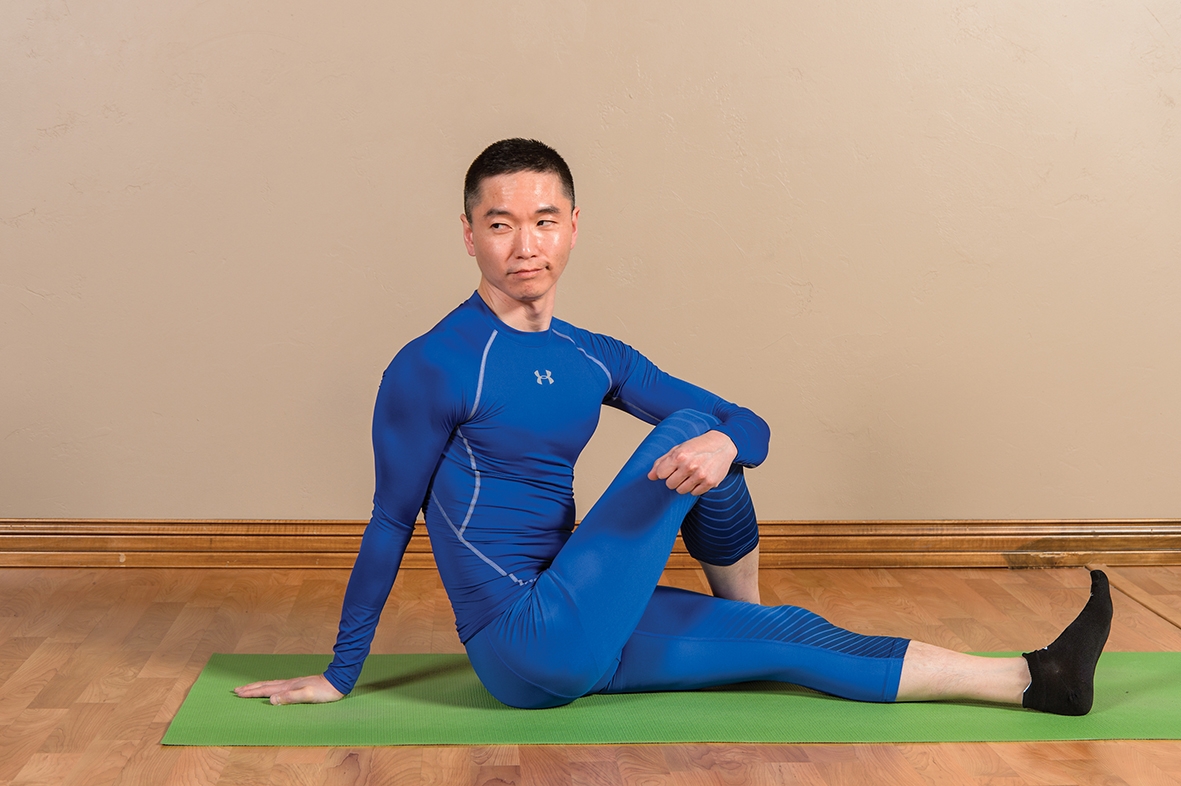
When running, the body’s focus is forward and little lateral movement or torso turning occur. Seated spinal twist helps to ease the side-body and mid-back stiffness. Sit and extend both legs out in front of you. Bend your right knee to your chest, and plant your right foot on the mat on the outside of your left thigh. Plant your right hand on the floor behind your hips. Wrap your left arm around your right knee. Press into your right palm to lengthen your spine up, and twist your torso to your right. Switch sides.
Runner’s back lunge pose
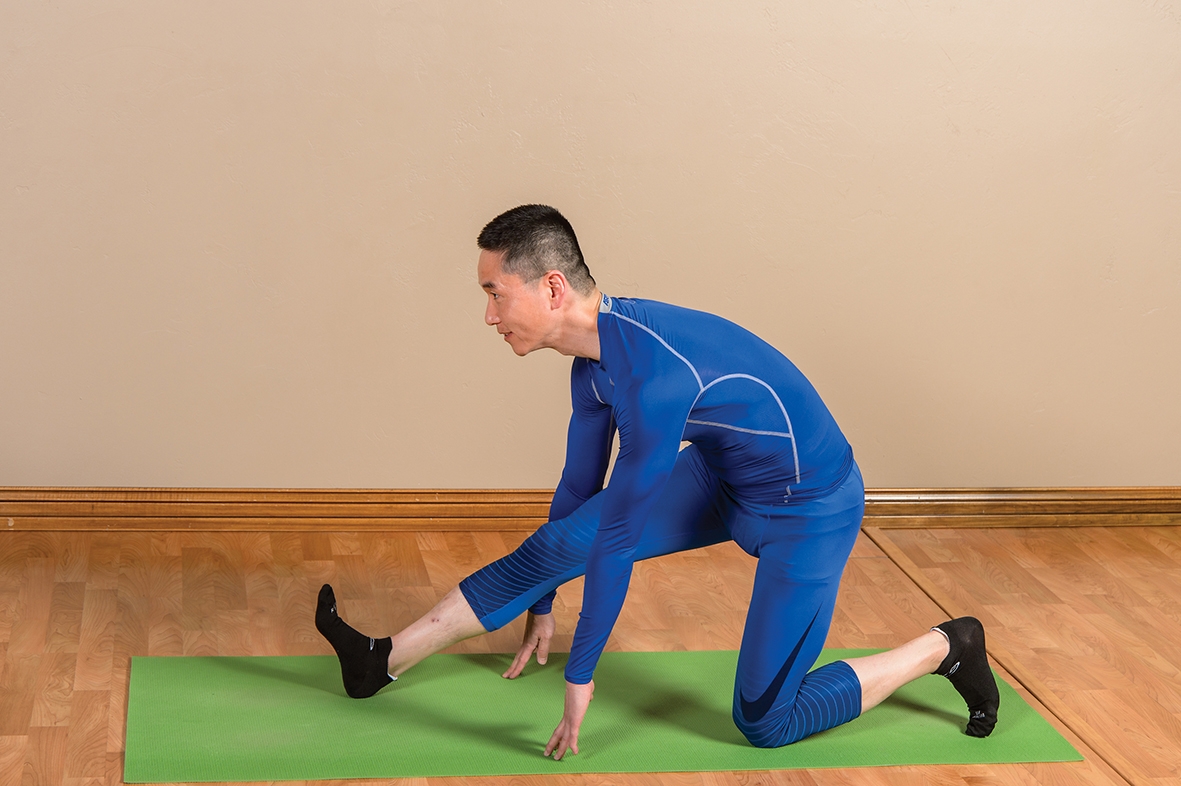
Keeping the hamstrings loose and flexible with runner’s back lunge helps to keep runners free of pain and injury. Start in a low lunge pose with your right foot forward. Place both hands on the mat on each side of your right foot. Curl your left toes under, and shift your hips back toward your left foot. Go back only until your right leg straightens. Flex your right foot, and walk both hands forward. Look forward to lengthen your spine, and hook your right hip under. Switch sides.
Bridge pose
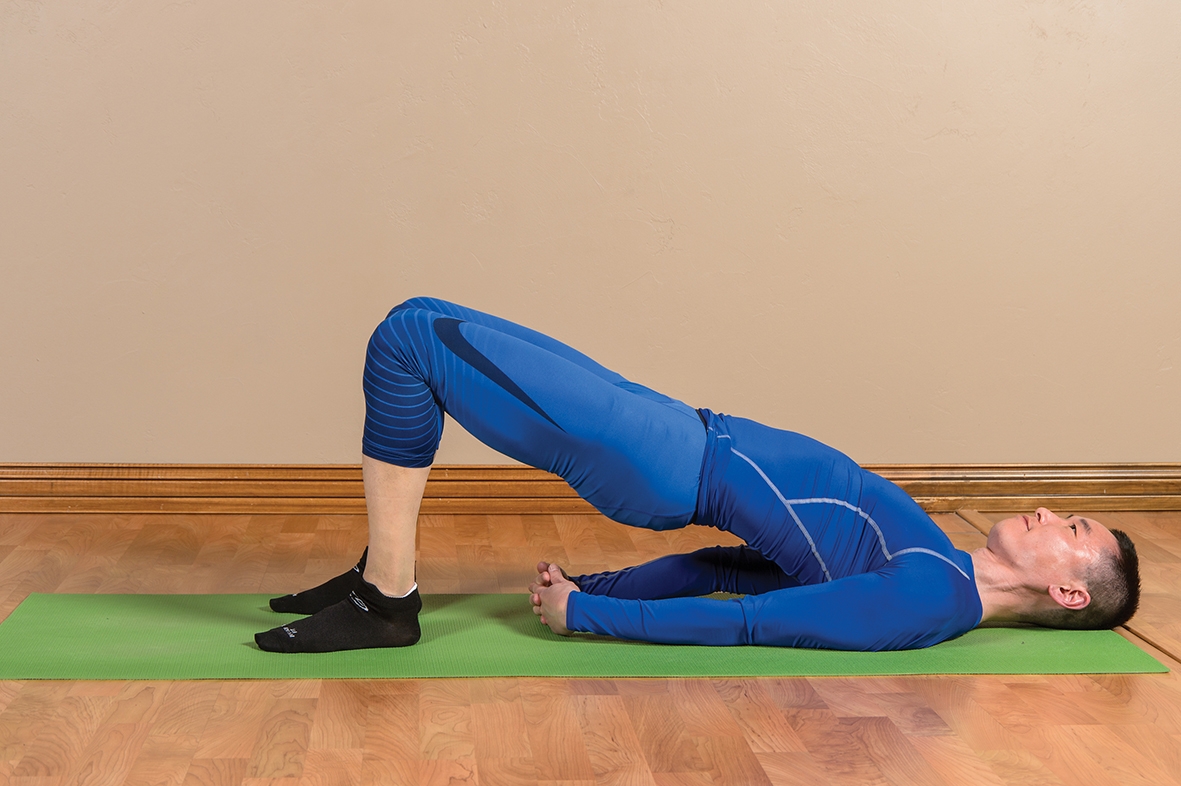
Repetitive pounding on cement while running can create tension in the back. Being in a backbend such as bridge pose can ease tense muscles. Lie on your back. Bend both knees and plant your feet on the mat hip-width apart. Extend both arms down along your sides, and walk your heels to your fingertips. Pressing your feet down into your mat, lift your hips. Push your knees forward, lifting your chest up to your chin to lengthen your spine. Walk your shoulders under you and interlace your fingers, lowering your forearms to the mat.
Open chest pose
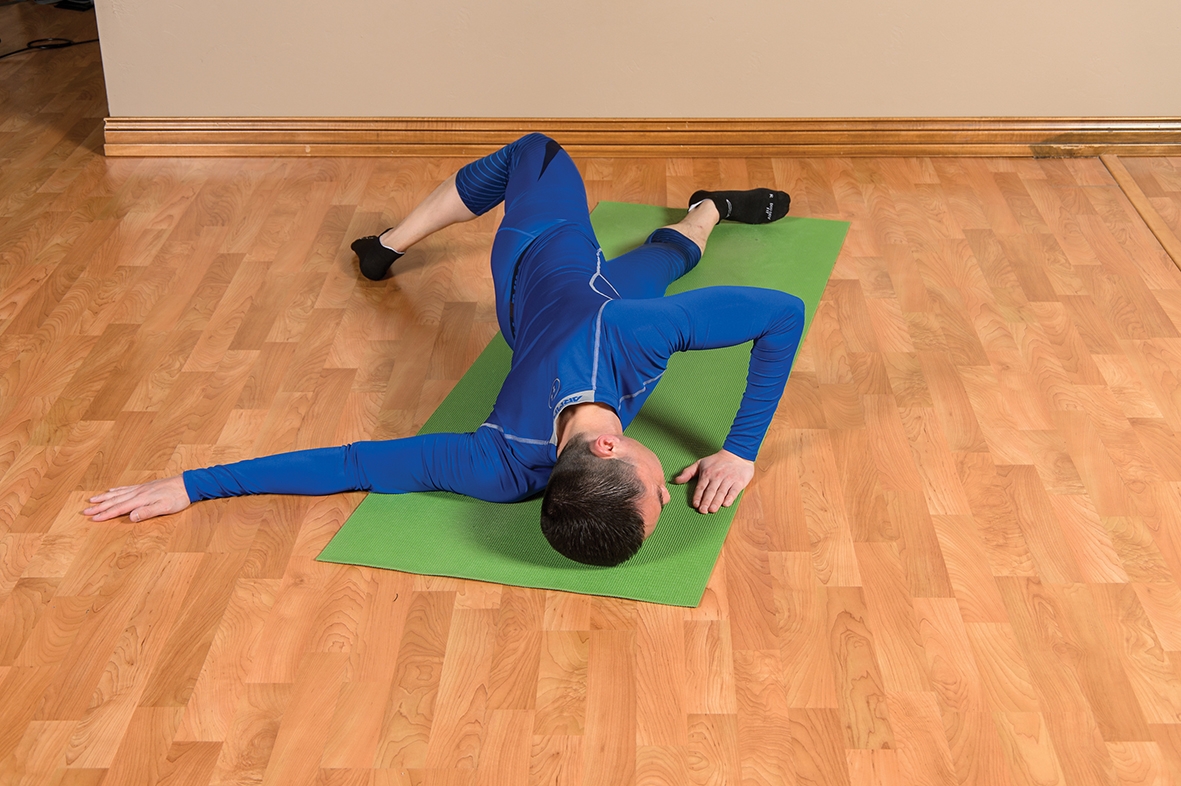
Runners tend to lean the torso forward while running. This forward-leaning posture allows the shoulders to gradually drop forward, causing tightness in the chest and shoulders. Open chest pose helps to broaden the space in the chest and the front of the shoulders, thus creating a feeling of openness. Lie on your belly. Turn your head to look to your right, and reach your right arm directly out of your right shoulder with your palm facing down. Then look to your left, relaxing your head on your mat as you place your left palm under your left shoulder. Bend your left knee, then lift your left thigh off the mat as you flip your left leg behind your right leg, planting your left foot on the mat. Press your left palm into your mat to turn your left shoulder back and deepen the stretch. Switch sides.
Standing big toe hold
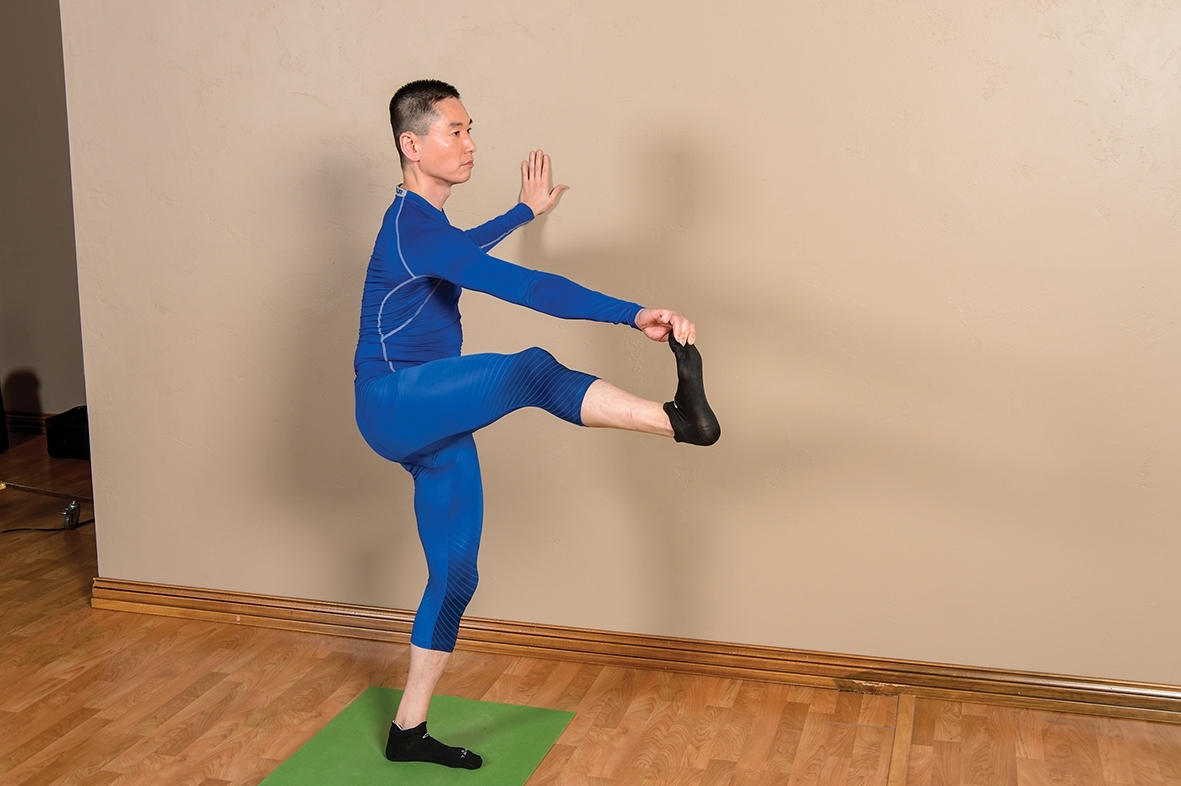
Runners are faced with uneven ground and elements of weather that will challenge their balance. Standing big toe hold trains the control a runner needs for these elements of nature. Stand at the top of your mat. Lean your weight onto your left foot. Bend your right knee, and bring it up to your chest. Hook your right index finger and middle finger around the big toe of your right foot; the fingers are between the big toe and second toe and gripping so that you can externally rotate the right shoulder. Extend your right foot forward in front of you, straightening your right leg; your left arm is reaching out to the left shoulder height, or your left hand is resting on a wall for support. Stand tall, and slowly move your right leg to your right side as you open the left arm out to the left with the hand at shoulder height. Look to your left. Switch legs.
Seated cow face pose
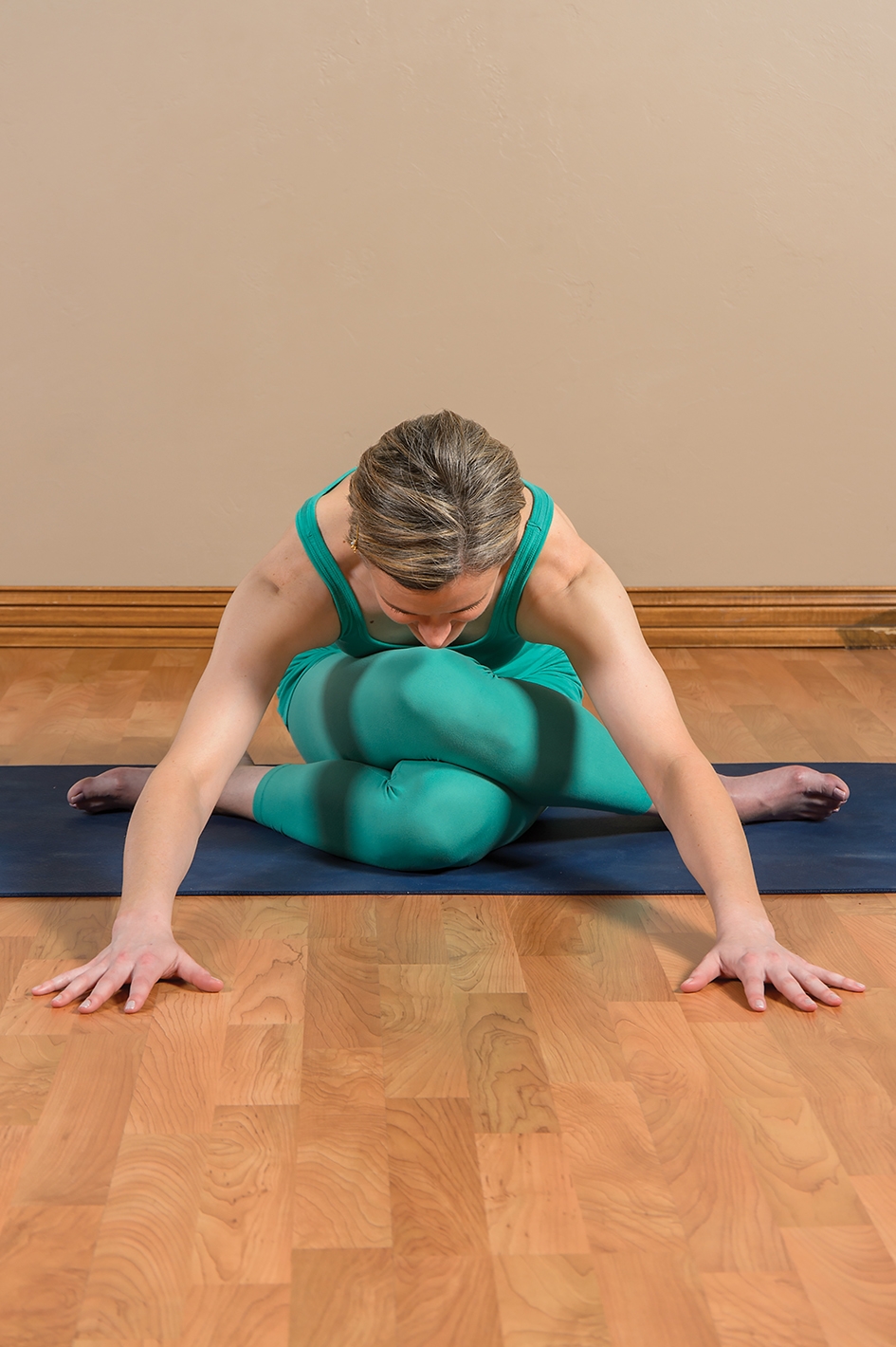
Running creates repetitive motion in the hips. Seated cow face pose eases the tightness in the outer hips that is associated with running. Sit on your mat with both legs lengthened in front of you. Bend your right knee to your chest and cross your right leg over your left leg, stacking your knees. Bend your bottom leg and slide your left foot next to your right hip. Walk your hands forward as you rest your chest on your right inner thigh and place your chin to your right knee. Switch legs.
Summary
To have a quality run, you need your whole body to function well. The legs drive you forward, but the upper body aids in momentum and speed. This chapter has targeted all aspects a runner needs to stay loose, maintain a strong core, and therefore aid in a faster, less injury-prone run.
These exercises are an excerpt from: Yoga for Athletes by Ryanne Cunningham by Human Kinetics. To purchase the entire book and master more movements, please visit: https://uk.humankinetics.com/products/yoga-for-athletes
For even more great insight, visit: https://humankinetics.me/2017/12/21/yoga-for-tight-hamstrings/
Where next? here Check out our other content from Human Kinetics
Check out our yoga instructor insurance cover.


